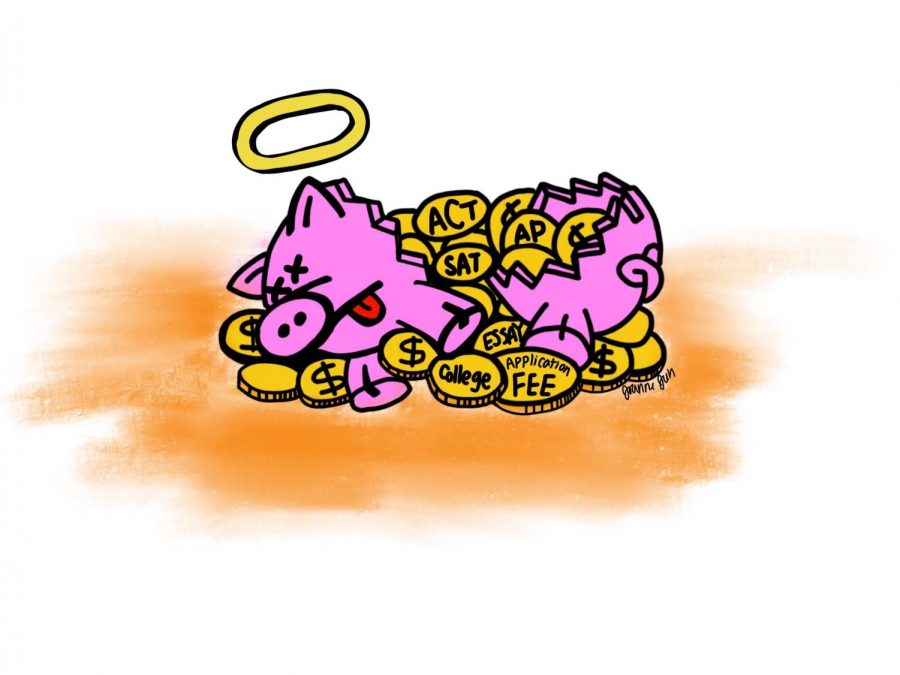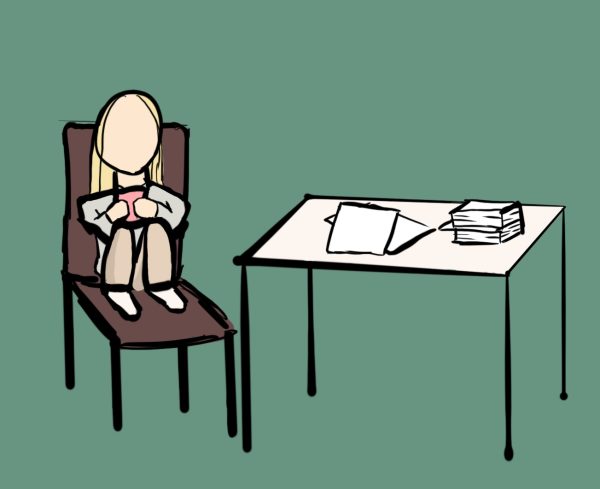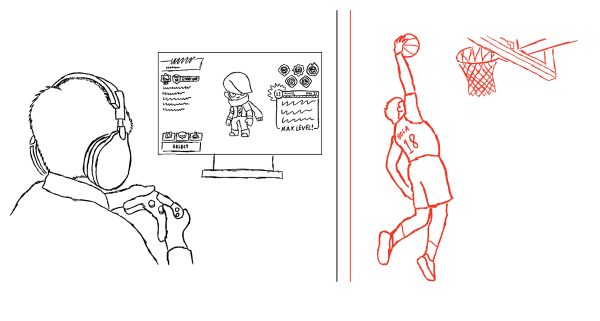Yowch! Beware the cost of college
Application season has seniors clutching coin purses
The college admissions process is harried enough for seniors based purely on the time-consuming applications, but financial stressors and false reporting by the schools themselves have pushed this editorial staff over the edge. The cost of applications ranges from nothing—at a few small colleges and military academies—to $90 at Stanford, according to Forbes. The exorbitant amount of money spent on applications, especially for schools where students have no guarantee of acceptance, is a ridiculous barrier for those who can’t afford to pay $75 for Harvard, whether it’s a long shot or they’re a dream candidate.
In an attempt to help students that face financial challenges, some colleges have designated weeks when they do not require an application fee. Also, some testing companies offer test and application fee waivers to be applied at the applicant’s college of choice. However, many of these waivers can’t be applied to more than four colleges; most seniors apply to double this number. They’re also difficult to obtain, and even if every application fee were covered, a person would still need a waiver for the cost of taking standardized tests and then sending those scores to the colleges. This exempts the four free mailings the companies offer, but considering that most juniors or seniors at the beginning of the year are unsure of where they want to apply, many students don’t take advantage of this opportunity or send scores to colleges they eventually decide against. Worrying about how to pay for only a vague chance at an education, which may cost an astronomical amount of money if accepted, should not be a concern for high school students who are already struggling with course loads or extracurriculars in order to be eligible for their colleges. Unfortunately, it is a reality many face.
These funds hardly have time allotted for deliberation, considering the time it takes each student to complete the other big application hurdle: essays. While it is understandable that each college requires writing to get to know the candidate, some have exceeded an appropriate number of requests. Writing one basic essay that is necessary for each application is expected, and an extra essay or two, especially for more selective schools, is a given. Once colleges begin requesting multiple, smaller essays in addition to various longer ones, as well as bits of specific information—including, in one case, a student’s favorite audio recording, book, song, and so on—the college needs to re-evaluate its application structure. At this point, a brief or even five-minute video from each student introducing themselves and their interests could be more effective. These are also topics that would facilitate a good conversation during an interview, if the school has the resources. Reconsideration of what information is relevant and where its presentation fits is a necessity on the part of colleges.
Colleges have also been found to skew their numbers to promote their own images. Colleges may accept more or less students from early or regular decisions than is fair or equal in order to lower their acceptance rate, increasing their chances of being labeled competitive and being ranked higher based on selection. How could a student accurately gauge their chances of acceptance or justify the cost of an application if they are unable to rely on the already limited information they have concerning their chances?
Given that is is unclear where the funds from these applications go within the college, it can be assumed that those highly expensive ones, especially from colleges reliant on endowments, can and should be lowered without detriment to educational funds or student opportunities. Take advantage of any waivers that may be accessed, apply for scholarships and pray that wherever fall applications take everyone, the students may be aided and not have to go for broke on a chance.
Your donation will support the student journalists of Saint Viator High School. Your contribution will allow us to purchase equipment and cover our annual website hosting costs.








